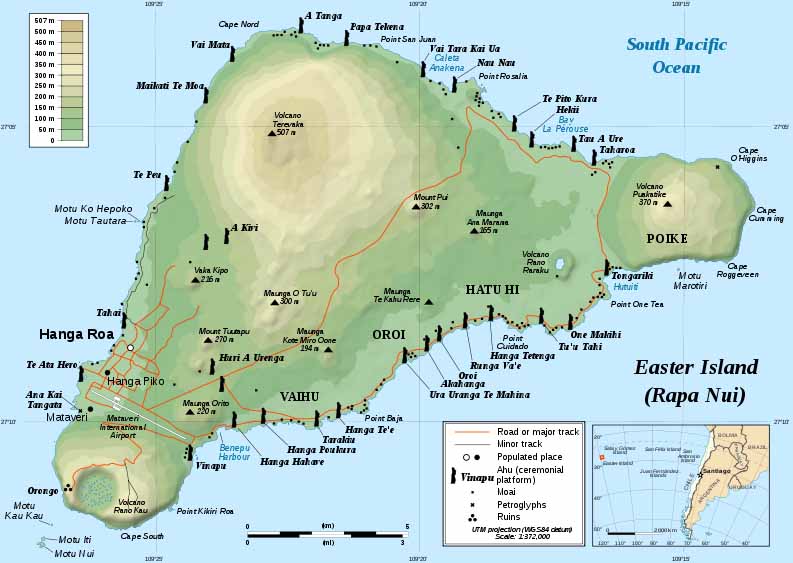Anthropology
Related: About this forumNew evidence challenges theories of Rapa Nui collapse
New evidence challenges theories of Rapa Nui collapse
Article created on Friday, December 13, 2013
Dr. Mara Mulrooney, assistant anthropologist at Bishop Museum in Honululu, conducted a six year study on Rapa Nui (Easter Island) concerning the island’s theoretical civilisation collapse. Her findings now challenge these previous ideas, which have claimed that the islanders “self-destructed” before Europeans first visited in 1722.
Results from her doctoral dissertation are published in the December issue of the Journal of Archaeological Science.
Debunking the popular view
As popularised in Jared Diamond’s 2005 book Collapse, Rapa Nui is often viewed as a prime example of what happens when people lose sight of what they are doing to their environment. According to the popular narrative, the Rapa Nui people committed “environmental suicide” by deforesting their island home. However, Dr. Mulrooney and colleagues are starting to construct a more positive scenario.
“The new picture that emerges from these results is really one of sustainability and continuity rather than collapse, which sheds new light on what we can really learn from Rapa Nui,” said Mulrooney. “Based on these new findings, perhaps Rapa Nui should be the poster-child of how human ingenuity can result in success, rather than failure.”
Continued use
Dr. Mulrooney analysed over 300 radiocarbon dates from across the island, including 15 dates from new excavations in the northern area of the island. These new findings, along with the re-analysis of previously collected dates, showed that large tracts of Rapa Nui’s interior continued to be used for agricultural production of foods like sweet potatoes and taro, even after European contact with the island. This directly challenges the previous belief that these areas were abandoned as the island chiefdom supposedly collapsed.
More:
http://www.pasthorizonspr.com/index.php/archives/12/2013/new-evidence-challenges-theories-of-rapa-nui-collapse
NYC_SKP
(68,644 posts)Polynesian rats (Rattus exulans) stowed divided on those canoes, Hunt and Lipo say, and once they landed, with no enemies and lots of palm roots to eat, they went on a binge, eating and destroying tree after tree, and augmenting during a mad rate. As a reviewer in The Wall Street Journal reported,
In laboratory settings, Polynesian rodent populations can double in 47 days. Throw a tact span into an island with no predators and abounding food and arithmetic suggests a outcome … If a animals double as they did in Hawaii, a authors calculate, [Easter Island] would fast have housed between dual and 3 million. Among a favorite food sources of R. exulans are tree seeds and tree sprouts. Humans certainly privileged some of a forest, nonetheless a genuine repairs would have come from a rats that prevented new growth.
As a trees went, so did 20 other timberland plants, 6 land birds and several sea birds. So there was unequivocally reduction choice in food, a most narrower diet, and nonetheless people continued to live on Easter Island, and food, it seems, was not their large problem.
snip...
http://healthmedicinet.com/what-happened-on-easter-island-a-new-even-scarier-scenario/
And an earlier article: http://www.smithsonianmag.com/people-places/The_Mystery_of_Easter_Island.html
